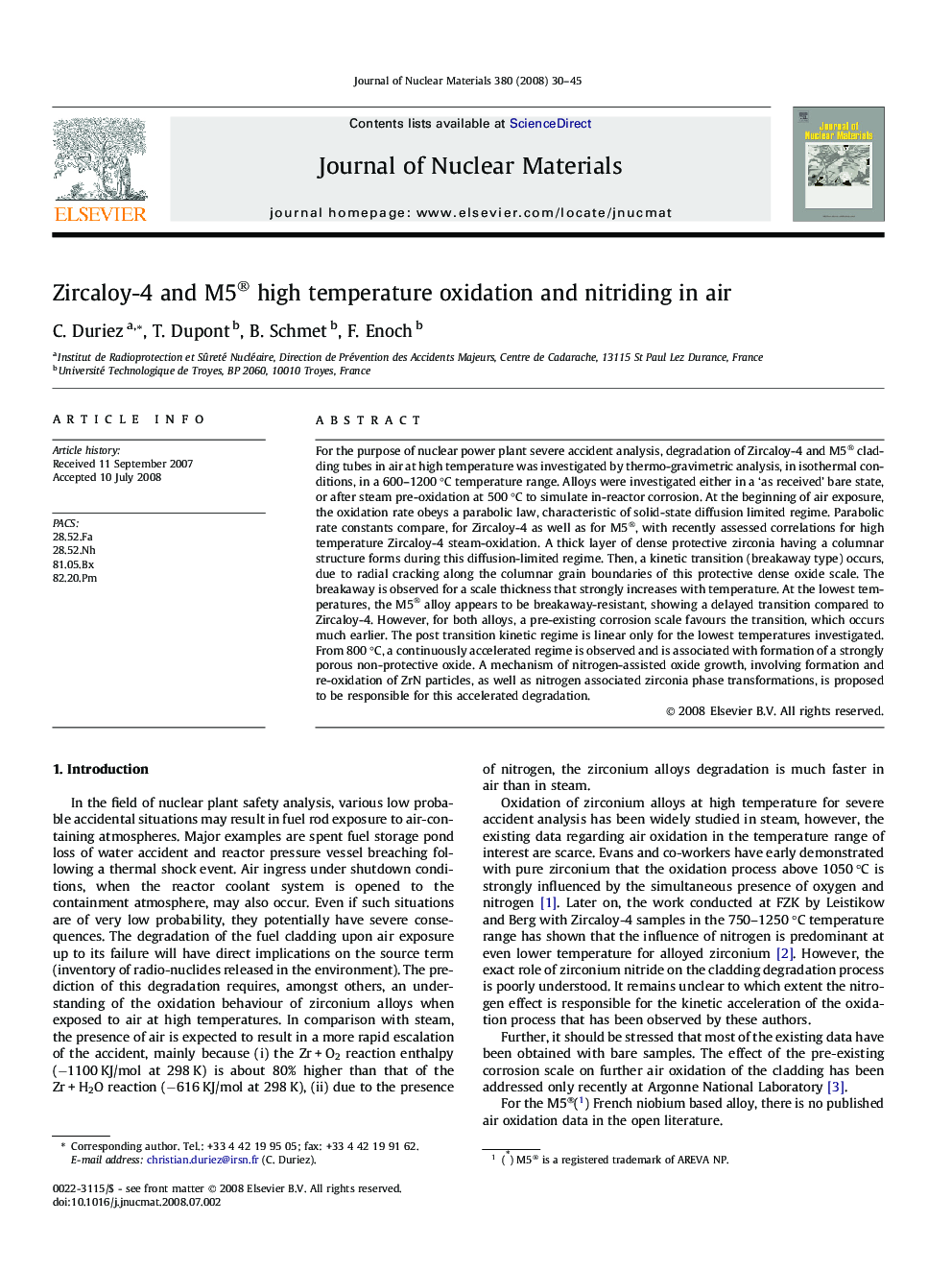| Article ID | Journal | Published Year | Pages | File Type |
|---|---|---|---|---|
| 1568893 | Journal of Nuclear Materials | 2008 | 16 Pages |
For the purpose of nuclear power plant severe accident analysis, degradation of Zircaloy-4 and M5® cladding tubes in air at high temperature was investigated by thermo-gravimetric analysis, in isothermal conditions, in a 600–1200 °C temperature range. Alloys were investigated either in a ‘as received’ bare state, or after steam pre-oxidation at 500 °C to simulate in-reactor corrosion. At the beginning of air exposure, the oxidation rate obeys a parabolic law, characteristic of solid-state diffusion limited regime. Parabolic rate constants compare, for Zircaloy-4 as well as for M5®, with recently assessed correlations for high temperature Zircaloy-4 steam-oxidation. A thick layer of dense protective zirconia having a columnar structure forms during this diffusion-limited regime. Then, a kinetic transition (breakaway type) occurs, due to radial cracking along the columnar grain boundaries of this protective dense oxide scale. The breakaway is observed for a scale thickness that strongly increases with temperature. At the lowest temperatures, the M5® alloy appears to be breakaway-resistant, showing a delayed transition compared to Zircaloy-4. However, for both alloys, a pre-existing corrosion scale favours the transition, which occurs much earlier. The post transition kinetic regime is linear only for the lowest temperatures investigated. From 800 °C, a continuously accelerated regime is observed and is associated with formation of a strongly porous non-protective oxide. A mechanism of nitrogen-assisted oxide growth, involving formation and re-oxidation of ZrN particles, as well as nitrogen associated zirconia phase transformations, is proposed to be responsible for this accelerated degradation.
